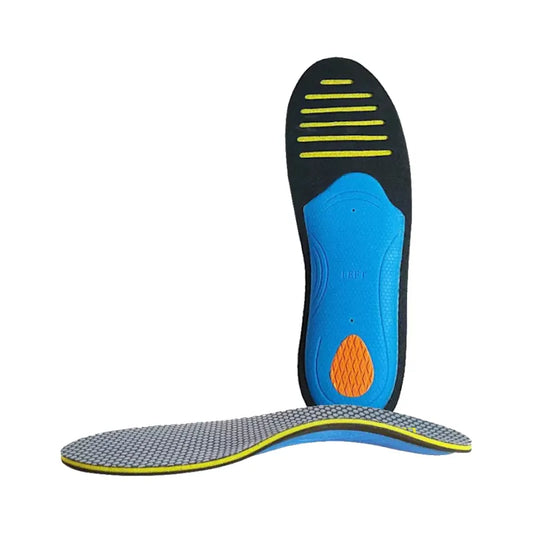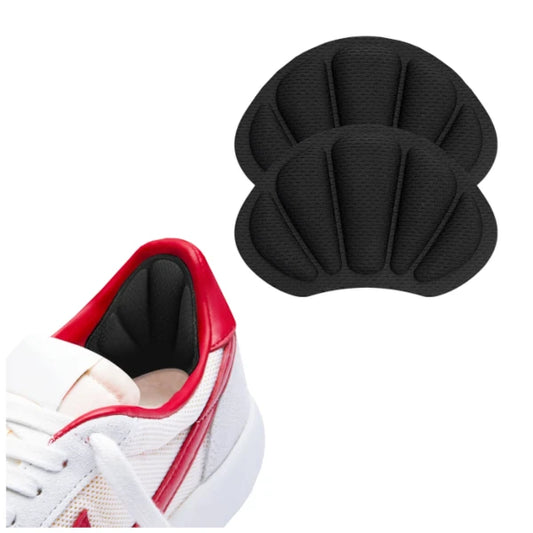
5 signs your Plantar Fasciitis is healing
Share
Plantar fasciitis is one of the most common causes of heel pain. It is characterized by inflammation of the thick band of tissue, the plantar fascia, that runs across the bottom of your foot, connecting your heel bone to your toes. This condition is common among athletes, particularly runners, but can also occur in individuals who spend long periods on their feet.

It is crucial to be able to identify signs of healing in plantar fasciitis, especially for those actively involved in treatments or rehabilitation exercises. Knowing when your plantar fasciitis is healing can help you modulate your exercise and activity level appropriately, ensuring that you don't worsen the condition through overexertion. Here are five key signs that your plantar fasciitis is healing:
1) Pain Reduction - The first and most noticeable sign of healing is a reduction in pain. Plantar fasciitis is often associated with a sharp, stabbing pain near the heel of the foot, usually most severe during the first steps after awakening or after prolonged periods of standing or sitting. As the condition improves, this pain should become less severe and less frequent. You may notice that you can walk or stand for longer periods without discomfort, or that the pain is not as intense when you first step out of bed in the morning. Note that pain reduction can be gradual, so it's helpful to keep a pain diary, documenting your pain levels at different times of the day and during various activities.
2) Increased Mobility - Another sign of healing is increased mobility. When the plantar fascia is inflamed, it can restrict the foot's range of motion. As the inflammation subsides, you might notice that flexing your foot or walking on uneven surfaces is easier. You may also find that your stride is returning to normal, indicating that the plantar fascia is becoming more flexible and accommodating to the normal movements of walking and running.
3) Less Morning Stiffness - People with plantar fasciitis often experience stiffness in the foot, especially in the morning or after periods of rest. This happens because the plantar fascia shortens and tightens when the foot is at rest. When you stand or walk, the sudden stretch can cause pain. As the condition heals, you might notice less stiffness after waking up or standing after a long period of sitting. This is a positive sign that the inflammation in the plantar fascia is subsiding.
4) Reduced Swelling or Redness - In some cases, plantar fasciitis can cause swelling or redness in the heel. This is a result of inflammation in the plantar fascia. If your heel is less swollen or red, it could be a sign that the inflammation is reducing, and the plantar fascia is healing.
5) Improved Functionality - The ultimate sign that your plantar fasciitis is healing is the restoration of normal function. As the condition improves, you'll be able to return to regular activities such as walking, running, jumping, or standing for extended periods, without pain or discomfort. Remember, however, that you should gradually reintroduce activities to avoid re-injuring the plantar fascia. Consulting with a healthcare provider or physical therapist can be useful in devising an appropriate plan for returning to activity.
While these signs can indicate healing, it's crucial to remember that recovery from plantar fasciitis often takes time, with complete healing potentially requiring several weeks to months. Always consult with a healthcare provider or physical therapist for personalized advice and treatment.
Additionally, continue to practice good foot care habits even after your plantar fasciitis has healed. This includes maintaining a healthy weight, wearing supportive shoes, wearing insoles, avoiding barefoot walking on hard surfaces, and incorporating regular stretching exercises into your routine. Regular exercise can help strengthen your foot and ankle muscles, thereby reducing the risk of further plantar fasciitis episodes.
Be patient with your recovery. Healing is a gradual process, and it can take time for the damaged plantar fascia to heal completely and for the associated pain to fully subside. Listen to your body and take note of any persistent or worsening symptoms. If your symptoms do not improve, or if they worsen despite treatment, seek medical attention. There may be other underlying issues contributing to your pain, and it's essential to address these to facilitate healing.
While watching for signs of healing, continuing treatments for plantar fasciitis can be beneficial. This might include physical therapy, the use of supportive shoes or insoles, and avoiding activities that put excessive strain on your foot, such as running or jumping. These measures can help speed up recovery and reduce the risk of re-injury.
Remember that everyone's healing journey is unique. What works best for one person may not work as well for another, and healing times can vary. Your overall health, the severity of your condition, your consistency in following treatment guidelines, and many other factors can influence how quickly your plantar fasciitis heals.
Conclusion
Recognizing the signs of healing in plantar fasciitis is crucial to managing this condition effectively. It allows for appropriate adjustment of treatment and rehabilitation strategies and provides a mental boost by confirming that your hard work is paying off and recovery is in sight. However, bear in mind that true recovery goes beyond just symptom relief. It's about restoring your foot's function and flexibility, returning to your regular activities without pain, and preventing future recurrences. Therefore, ongoing care and prevention are just as important as recognizing the signs of healing.
Author Bio

Marlene Carvalho
Certified Sports Physiotherapist of Elite and Olympic athletes; Performance Coach to racing drivers
Marlene Carvalho is a sports physiotherapist passionate about all things sports.
References
- American Academy of Orthopaedic Surgeons (AAOS): https://orthoinfo.aaos.org/en/diseases--conditions/plantar-fasciitis-and-bone-spurs/
- Lemont, K., Ammirati, K.M., Usen, N. (2003). "Plantar fasciitis: a degenerative process (fasciosis) without inflammation." Journal of the American Podiatric Medical Association. https://pubmed.ncbi.nlm.nih.gov/12756315/
- Thomas JL, Christensen JC, Kravitz SR, et al. (2010) "The diagnosis and treatment of heel pain: a clinical practice guideline-revision 2010." Journal of Foot & Ankle Surgery. https://pubmed.ncbi.nlm.nih.gov/20439021/






